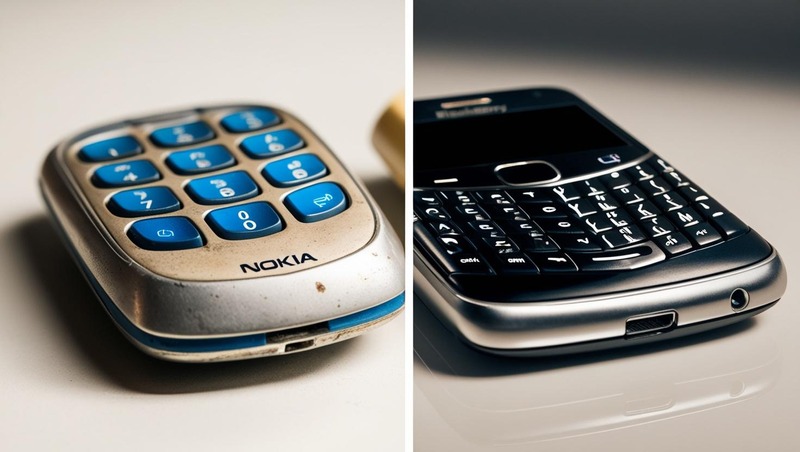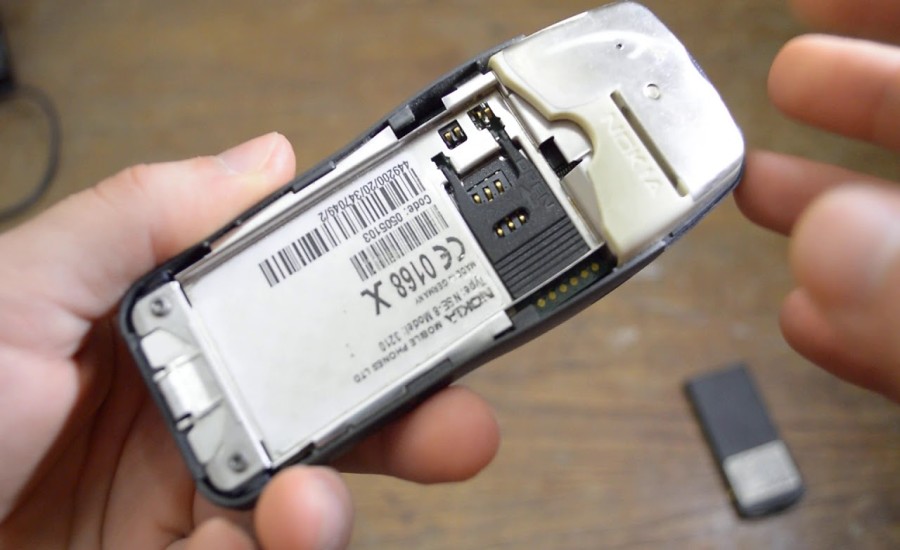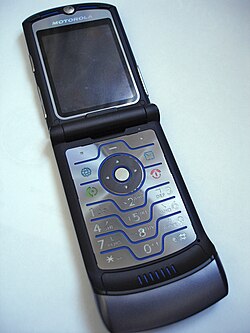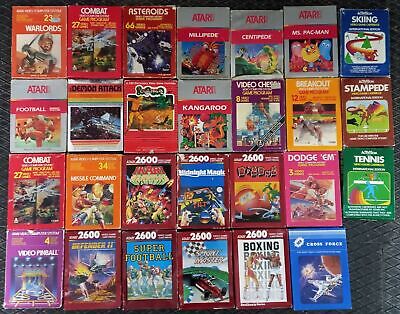
Let’s travel back to the mid-2000s. You’re perhaps on a college campus in Vadodara, or navigating the bustling city streets. Many lost mobile phone features like removable batteries, physical keypads, IR blasters, and FM radios have disappeared from modern smartphones.
Your companion? Not a sleek glass rectangle, but maybe a sturdy Nokia candy bar, a stylish Sony Ericsson Walkman phone, or perhaps the iconic Moto Razr flip. Someone sends you an SMS.
You pull out your phone and, without even looking, your thumbs fly across the physical T9 keypad, crafting a reply faster than you might manage on a touchscreen today. The click-click-click is satisfying, definitive. Later, anticipating a long bus journey with uncertain charging opportunities, you simply pop off the back cover and swap the near-dead removable battery with a fully charged spare from your bag.
You plug in your standard, reliable 3.5mm wired earbuds to listen to the offline FM radio for free. A tiny LED light blinks discreetly, letting you know you missed a call without lighting up the whole screen. These weren’t just features; they were part of the practical, tactile, and often more user-empowering experience of mobile phones before the era of the sealed glass slab.
The Joy of Tactile Input: Keyboards & Buttons
 Before glass screens dominated, our primary interaction with phones involved pressing actual buttons. And oh, the buttons we had!
Before glass screens dominated, our primary interaction with phones involved pressing actual buttons. And oh, the buttons we had!
Feature Spotlight: Physical Keyboards (T9 & QWERTY)
- What they were: Tangible keypads for text input. Two main types reigned:
- T9 Keypads: The standard numeric keypad (0-9, *, #) found on countless Nokia, Samsung, Sony Ericsson, and Motorola feature phones popular globally, including India. Predictive text algorithms (like T9, meaning Text on 9 keys) allowed surprisingly fast typing by pressing each number key once per letter and letting the software guess the word. Muscle memory made “blind” typing a real skill.
- QWERTY Keyboards: Miniature versions of computer keyboards, popularized by BlackBerry for efficient email and messaging, and also featured on devices like the Nokia E-series, Palm Treos, and various slider phones (like the Sidekick or some early Androids). Essential for business users and prolific texters.
- Why we miss them: Tactile feedback. The physical click confirmed input, allowing for faster, more accurate typing for many, often without looking. Reduced reliance on autocorrect. The sheer satisfaction of a physical press.
- Why they vanished: The rise of capacitive touchscreens enabled larger displays in the same footprint. On-screen keyboards became standard, allowing for dynamic layouts and language switching, prioritized by devices like the iPhone. Physical keyboards added bulk and complexity.
Feature Spotlight: Dedicated Hardware Buttons
- What they were: Single-function physical buttons for common tasks. Think green ‘Answer’ and red ‘End Call’ buttons, dedicated camera shutter buttons (often two-stage: half-press to focus, full-press to capture), physical volume rockers, and sometimes dedicated music playback controls (play/pause, skip track – like on Sony Ericsson Walkman phones).
- Why we miss them: Instant, unambiguous action. You could answer a call, adjust volume, or snap a photo without looking at the screen, often even with gloves on. A dedicated camera button felt much more like using a real camera.
- Why they vanished: Pursuit of minimalist design, reduction of moving parts, larger screens leaving less room for buttons, functions absorbed by touchscreens and multi-use buttons (like power/volume buttons taking screenshots or launching assistants).
Parallel Developments (Late 90s – Late 00s)
- SMS becomes the dominant form of mobile communication.
- Mobile email access grows (BlackBerry).
- Touchscreens evolve from resistive (requiring pressure, used with styluses) to capacitive (sensing finger touch, popularized by iPhone).
User Experience Snapshot
Remember the satisfying thump of snapping a flip phone shut after a call? The speed at which you could text C U L8R on a T9 pad without looking? Using the side button on your Sony Ericsson to pause your MP3s instantly? These physical interactions felt direct, reliable, and often more efficient than navigating touch menus for basic functions.
Power & Storage Freedom: Batteries & Memory Cards

Beyond input, older phones often gave users more control over essential components like power and storage.
Feature Spotlight: Removable Batteries
- What it was: Batteries that could be easily accessed and swapped out by the user simply by removing the phone’s back cover.
- Why we miss it: Instant full power: Carry a spare battery and go from 0% to 100% in seconds – invaluable for travel, emergencies, or heavy use, especially during India’s frequent power cuts.
Extended lifespan: When battery health degraded after a couple of years, you could buy an affordable replacement battery instead of replacing the whole phone or facing an expensive repair.
Troubleshooting: A hard reset for a frozen phone often involved simply popping the battery out and back in. - Why it vanished: Drive towards thinner unibody designs (metal/glass) where a removable back wasn’t feasible. Desire for waterproofing/dust resistance (easier to seal a phone without a removable cover). Allowed manufacturers to fit slightly larger, non-rectangular batteries internally. Arguably, encourages faster upgrade cycles as battery degradation becomes a major reason to buy a new phone.
Feature Spotlight: Expandable Storage (MicroSD Cards)
- What it was: A slot allowing users to insert a small MicroSD card to significantly increase the phone’s storage capacity for photos, videos, music, and sometimes apps.
- Why we miss it: Affordable & Flexible Storage: MicroSD cards offered a cheap way to add massive amounts of storage (tens or hundreds of GBs) compared to the steep price premiums manufacturers charged for higher internal storage tiers. Easy to transfer large files between devices by swapping cards.
- Why it vanished (from many flagships): Manufacturers prefer selling higher-margin phones with more built-in storage. Encourages use of profitable cloud storage subscriptions. Can sometimes be perceived as slower or less reliable than internal storage (though modern cards are fast). Takes up internal space that could be used for other components (like larger batteries). Note: Still common in budget/mid-range phones, especially brands popular in India, proving continued demand.
Parallel Developments (2000s – 2010s)
- Lithium-ion batteries become standard, offering better energy density.
- Internal phone storage grows from MBs to GBs, but often lags behind growing media file sizes (MP3s, digital photos, videos).
- Cloud storage services emerge and become popular.
User Experience Snapshot
The peace of mind knowing you had a spare battery in your bag for that long journey. Loading up a 16GB MicroSD card (huge at the time!) with your entire MP3 collection. Not having to constantly delete photos or apps because you ran out of space. This user control over power and storage felt empowering and practical.
Beyond the Rectangle: Form Factors & Durability

Modern smartphones are marvels of engineering, but let’s be honest – most look remarkably similar: black or metallic rectangles of glass. Older generations offered a riot of design experimentation.
Feature Spotlight: Unique Form Factors
- What they were: Phones that weren’t just slabs!
- Flip Phones: The iconic clamshell design, popularized by the likes of the Motorola Razr V3 and countless Samsung models. Protected the screen and keypad, ended calls with a satisfying snap.
- Slider Phones: Keypads or keyboards slid out from behind the screen (vertically or horizontally, like the Danger Sidekick or Nokia N95). Offered large screens with hidden physical input.
- Candy Bar Phones: The classic non-folding design, but with huge variations in shape, size, materials, and button layouts (think Nokia 3310, Sony Ericsson K750i).
- Swivel Phones, Twisty Phones, Oddities: Experimental designs like the Nokia 7370 swivel or the gaming-focused Nokia N-Gage “taco phone.”
- Why we miss them: Variety & Personality: Phones had distinct looks and characters.
Physical Interaction: The flip, the slide – these added a tactile dimension.
Protection: Flip/slider designs inherently protected the main screen and keys when closed.
Durability: Many older phones, particularly Nokia candy bars, gained reputations for being incredibly tough (“indestructible Nokia 3310” meme), partly due to less glass and more robust plastic construction. - Why they vanished: Touchscreens necessitated large, flat fronts, making the slab form factor dominant for maximizing screen real estate. Complex mechanisms (hinges, sliders) added bulk, potential points of failure, and complexity to manufacturing.
Parallel Developments (2000s)
- Miniaturization allows for more complex designs.
- Mobile phones become fashion statements as much as communication tools.
- The iPhone (2007) sets the template for the large touchscreen slab, which competitors rapidly emulate.
User Experience Snapshot
The sheer cool factor of flipping open your Razr V3. The practicality of a slider QWERTY for typing long emails. The confidence that dropping your trusty Nokia wouldn’t result in a shattered screen. Phones felt more like distinct objects with personality, not just interchangeable glass surfaces.
Forgotten Connections & Indicators: Ports & Lights
Modern phone design often prioritizes seamlessness over ports and indicators that were once standard.
Feature Spotlight: Headphone Jack (3.5mm)
- What it was: The universal analogue audio port for plugging in standard wired headphones, earbuds, or external speakers.
- Why we miss it: Universality & Affordability: Worked with countless existing audio devices, no adapters needed. Wired earbuds are cheap and don’t need charging. Convenience: Allowed charging the phone while listening to wired audio. Audio Quality (Arguably): Some audiophiles prefer the quality of direct analogue output.
- Why it vanished: Apple led the charge (iPhone 7, 2016), citing the need for internal space (for bigger batteries, Taptic Engine), improved waterproofing, and pushing users towards their wireless AirPods. Other manufacturers followed, often citing similar reasons or simply trend-following.
Feature Spotlight: Infrared (IR) Blasters
- What it was: An infrared LED allowing the phone to act as a universal remote control for TVs, set-top boxes, air conditioners, stereos, etc., using dedicated apps.
- Why we miss it: Convenience: One device to control multiple appliances. Great for replacing lost remotes or simplifying the living room.
- Why it vanished (from most flagships): Considered a niche feature by many manufacturers. Takes up internal space. Universal remote functionality increasingly handled by Wi-Fi/Bluetooth connected smart home devices or apps specific to smart TVs (though IR remains common on appliances). Note: Still included by some brands like Xiaomi/Poco, especially popular in markets like India where many older, non-smart appliances are still in use.
Feature Spotlight: Notification LEDs
- What it was: A small, often multi-color, LED light typically on the front bezel that would blink or pulse to indicate missed calls, messages, low battery, or charging status without lighting up the main display.
- Why we miss it: Subtle & Power-Efficient: Provided at-a-glance notification awareness without the distraction or battery drain of waking the entire screen. Different colors could often be assigned to different apps (especially on BlackBerry/Android).
- Why it vanished: Pursuit of edge-to-edge, bezel-less screens left no physical space for it. Replaced functionally (though imperfectly) by Always-On Displays (which use more power on LCDs, less on OLEDs but still more than an LED) or brief screen wakes for notifications.
Parallel Developments (2010s)
- Bluetooth headphone technology improves dramatically.
- Smart home devices with Wi-Fi/Bluetooth control become more common.
- Smartphone design trends towards maximum screen-to-body ratio and minimalism. OLED display technology enables Always-On Displays.
User Experience Snapshot
Fumbling for a dongle just to plug in your standard headphones. Using your Xiaomi phone to turn on the AC when the remote is lost. Knowing you have a WhatsApp message just by seeing a tiny green blink across the room. These small conveniences, now largely gone from flagship phones, felt integrated and practical.
Offline Essentials: FM Radio
In an age before unlimited data plans and ubiquitous streaming, one feature provided free, accessible entertainment and information.
Feature Spotlight: Offline FM Radio
- What it was: A built-in FM radio receiver chip that allowed users to listen to local terrestrial FM radio stations directly on their phone. Usually required plugging in wired headphones, which acted as the antenna.
- Why we miss it: Free Entertainment/Info: No mobile data or Wi-Fi required. Great for listening to music, news, sports, and talk shows without impacting data caps.
Works Anywhere (with signal): Didn’t rely on internet connectivity, making it invaluable in areas with poor coverage or during emergencies when cell networks might be down.
Low Power Consumption: Used less battery than streaming music online. - Why it vanished (from many flagships): Manufacturers often cite space constraints or lack of perceived demand from users who prefer streaming services. It potentially conflicts with selling streaming music subscriptions or data plans. Chipsets often still include the capability, but manufacturers choose not to enable it or connect the antenna circuitry. Note: Advocacy groups (like TRAI in India) push for its retention for emergency broadcast reasons and accessibility. It remains a feature in many budget/mid-range phones, particularly in markets like India.
Parallel Developments (2000s – 2010s)
- MP3 players offer stored music, then streaming music services (Spotify, Apple Music, Gaana/JioSaavn in India) become dominant.
- Mobile data becomes faster and cheaper, making streaming more viable.
- Podcasts offer alternative audio content.
User Experience Snapshot
Listening to your local radio station on the bus commute without worrying about data usage. Catching the cricket commentary via FM when the internet signal was weak. Having a reliable source of information during a storm or power outage. The offline FM radio was a simple, robust, and free feature many relied on.
Why Did They Go? The Price of Sleekness
The disappearance of these beloved features wasn’t driven by a single factor, but a confluence of trends and decisions:
- Aesthetics & Thinness: The relentless pursuit of thinner, seamless devices made physical keyboards, removable backs, headphone jacks, and even notification LEDs design hurdles.
- Waterproofing: Sealing phones against water and dust is easier without removable backs and physical ports like the 3.5mm jack.
- Ecosystem Lock-in & Accessory Sales: Removing the headphone jack boosted sales of proprietary wireless headphones (like AirPods) and dongles. Removing expandable storage pushes users towards more expensive higher-storage phone models or paid cloud subscriptions.
- Planned Obsolescence: Non-removable batteries with finite lifespans inevitably encourage users to upgrade their entire phone every few years.
- Cost Reduction: Fewer physical buttons, ports, and components can simplify manufacturing and potentially lower costs (though savings aren’t always passed on).
- Software Absorption: On-screen keyboards replaced physical ones; software toggles replaced some dedicated buttons; cloud storage replaced physical expansion for some.
Full Circle Reflections
Modern smartphones are technological marvels – powerful computers, incredible cameras, and portals to infinite information and entertainment, all packed into a sleek glass slab. We’ve gained immensely in processing power, screen quality, and software sophistication. But looking back, it’s hard not to feel a pang of nostalgia for the features we lost along the way.
The satisfying click of a real keyboard, the security of a spare battery, the freedom of a universal headphone jack, the convenience of an IR blaster or offline FM radio, the simple blink of a notification LED – these weren’t just quaint quirks. They often represented practicality, user control, durability, and a design diversity that feels missing today.
They were features born from user needs in a different technological context. While progress marches on, the fondness with which we remember these “lost” features suggests that sometimes, in the relentless pursuit of the sleek and seamless future, we may have left behind some genuinely useful and beloved aspects of the past. The ghosts of buttons clicked and batteries swapped remind us that innovation always involves trade-offs.
Technology is always moving forward, but sometimes progress means leaving behind features we once valued deeply. When we look back at lost mobile phone features, it’s clear they played a significant role in shaping how we interacted with our devices—and even how mobile culture evolved.
Reflecting on these lost mobile phone features reminds us that innovation isn’t just about new gadgets—it’s also about balancing past benefits with future possibilities.
The Heritage Impact: Function Follows Form?
The phasing out of these features has shaped today’s mobile landscape:
- Design Homogeneity: Led to the dominance of the similar-looking touchscreen slab.
- Accessory Markets: Created huge markets for wireless headphones, dongles, power banks, and cloud storage.
- Repairability & Lifespan: Made phones harder and more expensive for users to repair (especially batteries), potentially shortening practical lifespans and increasing e-waste.
- User Adaptation: Forced users to adapt to touchscreen typing, manage battery life more carefully, and rely more on wireless or cloud solutions.
- Niche Demand: Created ongoing demand for features like headphone jacks and MicroSD slots, particularly in certain market segments and regions like India.
They may be gone from most flagships, but these lost features remain benchmarks of practicality and user control for many.
FAQ: Remembering Phone Features Past
- Why did old phones have physical keyboards (T9/QWERTY)?They provided tactile feedback, allowing for potentially faster and more accurate typing compared to early (or even current) touchscreens. QWERTY was essential for email/business users (BlackBerry), while T9 predictive text made numeric keypads surprisingly efficient for SMS.
- Why did phone companies remove removable batteries?Manufacturers cite several reasons: allows for thinner, unibody designs; improves water and dust resistance; enables fitting slightly larger or custom-shaped internal batteries. Critics argue it also encourages faster phone upgrade cycles due to battery degradation.
- Why was the 3.5mm headphone jack removed from most smartphones?Companies claim it allows for thinner phones, better waterproofing, and frees up internal space for other components. It also strongly encourages the adoption of wireless headphones (like AirPods) and related accessories (dongles), which are profitable product categories.
- Do any phones still have offline FM radio or IR blasters?Yes, but mostly not on flagship models from major global brands like Apple or Samsung. Built-in FM radio (requiring wired headphones as an antenna) and IR blasters (for universal remote control) are still found on some budget and mid-range smartphones, particularly from Chinese manufacturers (like Xiaomi, Poco) popular in markets like India.
- Are flip phones coming back? In a way, yes. Modern foldable smartphones (like Samsung Galaxy Z Flip series) offer a high-tech evolution of the clamshell design. Additionally, there’s a smaller market for simpler, retro-inspired “feature phone” flip models focusing on basic calling/texting and nostalgia.






